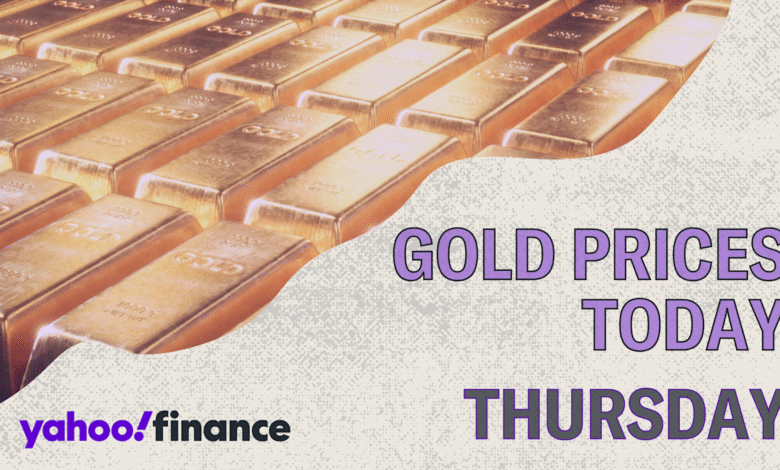Gold opens below $3,700 after Fed rate cut

Gold () futures opened at $3,692.50 per ounce on Thursday, up 0.3% from Wednesday’s close of $3,681.80. So far in September, gold has gained 5.9%.
The price of gold did not respond dramatically to the Federal Reserve’s first interest rate reduction of 2025. The central bank lowered the federal funds rate by 25 basis points and projected two additional rate cuts by year-end. The Fed also updated its Summary of Economic Projections, a report outlining projected inflation, unemployment, and economic growth. Current 2025 expectations include core inflation of 3.1% and an unemployment rate of 4.5%. Core inflation is not projected to reach the Fed’s 2% target until 2028.
The projections have reignited concerns about stagflation, a period of sluggish economic growth characterized by rising prices and unemployment. Gold demand likely increases under those conditions as investors leverage the precious metal’s safe-haven status.
The opening price of gold futures on Thursday is up 0.3% from Wednesday’s close of $3,681.80 per ounce. Thursday’s opening price is up 1.6% from the opening price of $3,632.90 one week ago on September 11. In the past month, the gold futures price has increased 10.8% compared to the opening price of $3,333.50 on August 18, 2025. In the past year, gold is up 43.6% from the opening price of $2,570.70 on September 18, 2024.
24/7 gold price tracking: Don’t forget you can monitor the current price of gold on Yahoo Finance 24 hours a day, seven days a week.
Want to learn more about the current top-performing companies in the gold industry? Explore a list of the top-performing companies in the gold industry using the Yahoo Finance Screener. You can create your own screeners with over 150 different screening criteria.
Investing in gold is a four-step process:
-
Set your goal.
-
Set an allocation.
-
Choose a form.
-
Consider your investment timeline.
After deciding why you want to invest in gold and selecting the size and form of your gold investment, consider your investment timeline as a final suitability check.
Gold can be volatile. It has demonstrated extended periods of decline in the past. Extended periods of decline are not acceptable if your timeline is short. The risk is too great that gold’s price will be down when you need to liquidate.
An extended holding period provides greater potential for reaching your investment goals. As an example, hedging against stock market declines or inflation is a long-term effort. These outcomes will continue to be risks as long as you own stocks or cash deposits. Holding gold as insurance against an economic calamity requires you to keep the asset until you need it.
A small gold position can act as a stabilizer for your stock portfolio and your purchasing power. If you choose physical gold stored at home, it can also stand in as currency in the worst of economic crises. Just know that gold has underperformed stocks in the past, so choose your target allocation accordingly.
Whether you’re tracking the price of gold since last month or last year, the price-of-gold chart below shows the precious metal’s steady upward climb in value.
Historically, gold has shown extended up cycles and down cycles. The precious metal was in a growth phase from 2009 to 2011. It then trended down, failing to set a new high for nine years.
In those lackluster years for gold, your position will negatively impact your overall investment returns. If that feels problematic, a lower allocation percentage is more appropriate. On the other hand, you may be willing to accept gold’s underperforming years so you can benefit more in the good years. In this case, you can target a higher percentage.
The precious metal has been in the news lately, and many analysts are bullish on gold. In May, Goldman Sachs Research predicted gold would reach $3,700 a troy ounce by year-end 2025. That would equate to a 40% increase for the year, based on gold’s January 2 opening price of $2,633. Rising demand from central banks, along with uncertainty related to changing U.S. tariff policy, are the factors driving the increase.
If you are interested in learning more about gold’s historical value, Yahoo Finance has been tracking the historical price of gold since 2000.
Credit: Source link






